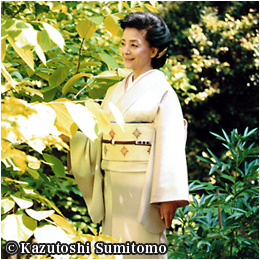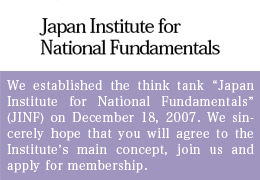A National Rejuvenation Scheme for Japan: A Proposal
Japan is still reeling from its worst catastrophe in recorded history—the colossal earthquake and tsunami of March 11 which has triggered nuclear disaster. For recovery, Japan urgently needs a vision of the future and an outline of the methods to be used.
On April 11, Prime Minister Naoto Kan set up the Reconstruction Design Council (RDC), vowing that it must aim not merely for reconstruction of the battered regions in Japan’s northeast but for sweeping national rejuvenation.
During the council’s first session on April 14, its chairman, Makoto Iokibe, drew tough criticism for declaring that the council, to respect the will of the prime minister, should not get into issues involving the crippled Fukushima Nuclear Power Plant. But no real discussion of the country’s rejuvenation is possible without defining the role of nuclear-power generation in Japan’s overall energy policy.
Iokibe also mentioned some of his own reconstruction ideas. For instance, he envisions farmers and fishermen living in homes to be built on high hills made from the vast rubble created by the quake and tsunami. They will commute daily to flatland paddies and fishing ports. While at work, the farmers and fishermen will be protected in quake- and tsunami-resistant buildings to be built in accessible locations, according to Iokibe.
The chairman also made clear that the RDC will push for reconstruction taxes to fund a series of major reconstruction projects. It is widely believed that Iokibe voiced his support for reconstruction taxes for the same reason he refused to have the RDC discuss nuclear-power generation. A tax increase was actually Kan’s idea to begin with. It is worth noting that a tax increase is part of a reconstruction plan the ruling DPJ (Democratic Party of Japan) is working on under party secretary-general Katsuya Okada.
Full-scale deliberations on the ultimate design for Japan’s rejuvenation will soon get under way, revolving around the above factors. At this crucial juncture in Japanese history, I wish to offer some modest advice. First, we need a big picture regarding what kind of state we want Japan to be – a vision for national rejuvenation.
Throughout its history, Japan has always aimed high and achieved great things, culturally and otherwise. For instance, way back in the Heian period (794-1185), Japan produced world-class literature, such as The Tale of Genji by Lady Murasaki (973-1025), considered by some to be the world’s first novel. And that was nearly six centuries before Shakespeare wrote his plays. During the time of Oda Nobunaga (1534-1582)—a daring feudal lord instrumental in unifying the country—Japan became one of the world’s largest trading nations. During the time of Toyotomi Hideyoshi (1537-1598), Japan was one of the world’s leading military powers, capable of deploying 300,000 soldiers overseas. And, during the Tokugawa period (1603-1868) in which a seclusion policy was imposed, Japan built a nation where peace prevailed for 260 years without armed conflict. During this period, also known as the Edo period, domestic industries and arts flourished, enabling people from all walks of life to reap the benefits of a well-developed economy. When Japan finally opened its doors to the world in 1868, the world immediately admired Japan as a great cultural power with a high standard of ethics and education—among the highest in the world then—with over 60 percent literacy.
Low Birth Rate, Aging Population, and Lack of Vigor
Despite a late industrial start, Japan modernized with amazing speed and quality following the Meiji Reform, becoming one of the few nations in Asia to escape colonial rule by foreign powers. Japan then came out victorious in its wars against China (1894-95) and Russia (1904-05), although its chances of victory were deemed extremely slim. The Russo-Japanese war particularly showed the rest of Asia—including India, China, and Vietnam—that they could fight for and win their independence. After crushing defeat in World War II, Japan rose from the ashes to become an economic power boasting the world’s highest industrial and technological standards and allowing it to extend loans and grants to the developing nations of the world.
That, however, is past. Today, Japan’s economy is struggling, overburdened by worsening debts and hampered by a rapidly declining birth rate, aging population, and lack of vigor. But no matter how insurmountable the task of reconstruction may appear, I believe that the Japanese will eventually overcome any hardships and achieve national rejuvenation on a grand scale—so long as we realize that we have always persevered and overcome the difficulties that confronted us at various historical junctures. As we grapple with the vital project of national rejuvenation, let us bear in mind that Japanese have always had a knack for overcoming hardships and that our strength lies in decent ethics and a gentle culture, which I believe are uniquely Japanese features. Based on such a conviction, let us now view the problems Japan faces as a result of the earthquake, tsunami, and explosions at the Fukushima Nuclear Power Plant.
Even before the Great East Japan Earthquake, the need for rebuilding Japan was repeatedly pointed out. The biggest areas calling for national revitalization were—and still are—a declining birth rate and steadily graying population. There is no denying this demographic reality, but it is hardly unique to Japan. In virtually all advanced nations, as people’s living standards improve, the same demographic tendencies appear. That is all the more reason for taking advantage of the catastrophe, argues Manabu Matsuda, head of the Kanagawa prefectural branch of the minority Sunrise Party of Japan from Kanagawa Prefecture. He believes Japan can become a role model for managing the world’s “most invigorated super-graying society.” Japan could lead the way for countries that, in a few years, will face precisely the same demographic problem.
The March 11 earthquake and tsunami added to a host of old problems impeding Japan’s growth, but the disaster has not transformed the fundamental nature of existing issues. In order to create the world’s most invigorated super-graying society, as Matsuda argues, the power of senior citizens in Japan should be fully brought into play to create a new vitality in Japanese state and society. What will this mean in terms of resources for national reconstruction and finances?
I personally believe that resorting to tax increases at this stage would be grossly counterproductive, even if its stated purpose is recovery and reconstruction. I fear it would inevitably weaken the economy. While Matsuda himself does not disapprove of provisional tax hikes, he stresses that the government should first ponder ways to most effectively utilize the enormous financial assets held by senior Japanese citizens. At the end of fiscal 2009, combined private Japanese financial assets were estimated at ¥1,453 trillion ($17.1 trillion) and debts at ¥350 trillion ($4.2 trillion), with the net assets totaling a whopping ¥1,083 trillion ($12.8 trillion)—more than double Japan’s GDP of that year. Of these assets, ¥862 trillion ($10.2 trillion)—almost 80 percent—is held by citizens over 65 years of age.
Meanwhile, in Japan people categorized as wealthy—those with more than ¥100 million ($1.2 million) in assets—number some 1.5 million, their combined assets valued at ¥400 trillion ($4.7 trillion). In other words, some ¥1,000 trillion ($11.8 trillion) out of a total of more than ¥1,400 trillion worth of Japanese private assets are held by “median income” Japanese, not wealthy ones.
Meanwhile, Japan held ¥270 trillion ($3.2 trillion) worth of net financial assets overseas at the end of the fiscal 2009—the largest among all the nations of the world. Matsuda says this huge amount represents the reverse side of Japan’s failure to utilize surplus financial assets in the domestic market.
Needed: Rejuvenation that Reflects Japanese Values
Now is the time for all committed Japanese to ponder how to utilize these dormant government and private financial assets in order to create an invigorated society with money in abundant supply in the domestic market – an affluent society that makes Japanese from all walks of life happy, young and old. It is vital to resuscitate society and the state by vigorously investing these assets in the domestic market.
Explains Matsuda: “One example would be to float a special government bond for reconstruction. To differentiate it from the mundane ‘deficit-covering’ government bonds, special accounts should be set up to specifically cope with expenditures relating to natural disasters, so that proceeds from the bond can be used only to cover disaster-related expenses. This literally constitutes a public bond that fills ‘mutual aid’ needs.”
Matsuda wants the bond issued interest-free, so it will not be an added financial burden on the government. Since there will be no direct financial benefits to those who buy the bond, the government should make up for it by offering purchasers certain tax benefits, such as dropping inheritance tax on their estates. What would happen if such measures are introduced?
Because the “mutual-aid bond” will provide revenue for various reconstruction projects, those who buy the bond will recognize first and foremost that they are actually helping the nation’s rejuvenation directly. The bond represents an ideal way for the millions of Japanese who are dying to do their parts for their fellow countrymen and country in a time of national crisis. In addition, the bond will let dormant funds play an active role in generating more business. The nation’s economy could turn active on a grand scale, increasing jobs, boosting the income of the younger generation, and providing economic support for child rearing. Furthermore, the bond will exempt younger people from inheritance tax.
Once such bonds materialize, the government can tap a rich reservoir of financial sources to fund reconstruction projects. If 1 percent of the ¥1,000 trillion ($11.1 trillion) worth of personal financial assets is spent on reconstruction bonds, ¥10 trillion ($118 billion) will become available. If 2 percent of the assets is spent, ¥20 trillion ($235 billion) will pour into the reconstruction fund.
Some may strongly object to interest-free bonds. However, bringing the financial assets held by a cross-section of ordinary Japanese into play will enormously invigorate the affected regions, those grappling with the tasks of reconstruction, and the entire national economy. I consider it an interesting idea worth pursuing. I believe all like-minded Japanese who cherish their country should think about what we need to realize a powerful rejuvenation of the nation – ideas aimed at creating a vivacious and invigorated super-graying state unmatched by any other nation. We must aim for a new state that reflects traditional Japanese values, respecting the public mind and compassion for others. Uniquely Japanese features and values can rejuvenate Japan and constitute a model of a truly civilized nation in tomorrow’s international community.
(end)
(Translated from “Renaissance Japan” column no. 459 in the May 5-12, 2011 combined issue of The Weekly Shincho.)








